You’ve just learned your organization is going through an acquisition. No matter what industry you’re in, an M&A is a stressful experience.
As an HR or operational leader, you have a special responsibility during an M&A.
Your job is to provide clear communication and transparency about the process, why it’s happening, and how employees will be impacted.
Why does this matter? Because M&As have an impact on two important workplace metrics:
- Retention: Retaining key talent is important for a successful merger, but employees who feel uncertain about their future during an M&A may begin looking elsewhere for opportunities.
- Productivity: Poorly-executed mergers can lead to reduced employee productivity, morale, and job satisfaction, which impacts post-merger success.
Your people are your organization’s most important asset. Fail to stay attuned to their needs, goals, and anxieties during the process, and you risk losing value instead of increasing it during your merger.
How can companies keep tabs on how their employees are feeling?
Mergers are complicated and offer little time for senior leaders to go on a listening tour of their company.
Employee surveys are an efficient way to gauge your workforce’s sentiments about a merger.
Here's how we can help you support your people through the merger:
Our platform automatically surveys your employees before and after the merger.
Sparkbay then gathers the responses and gives team managers and HR a clear report with a score out of 10.
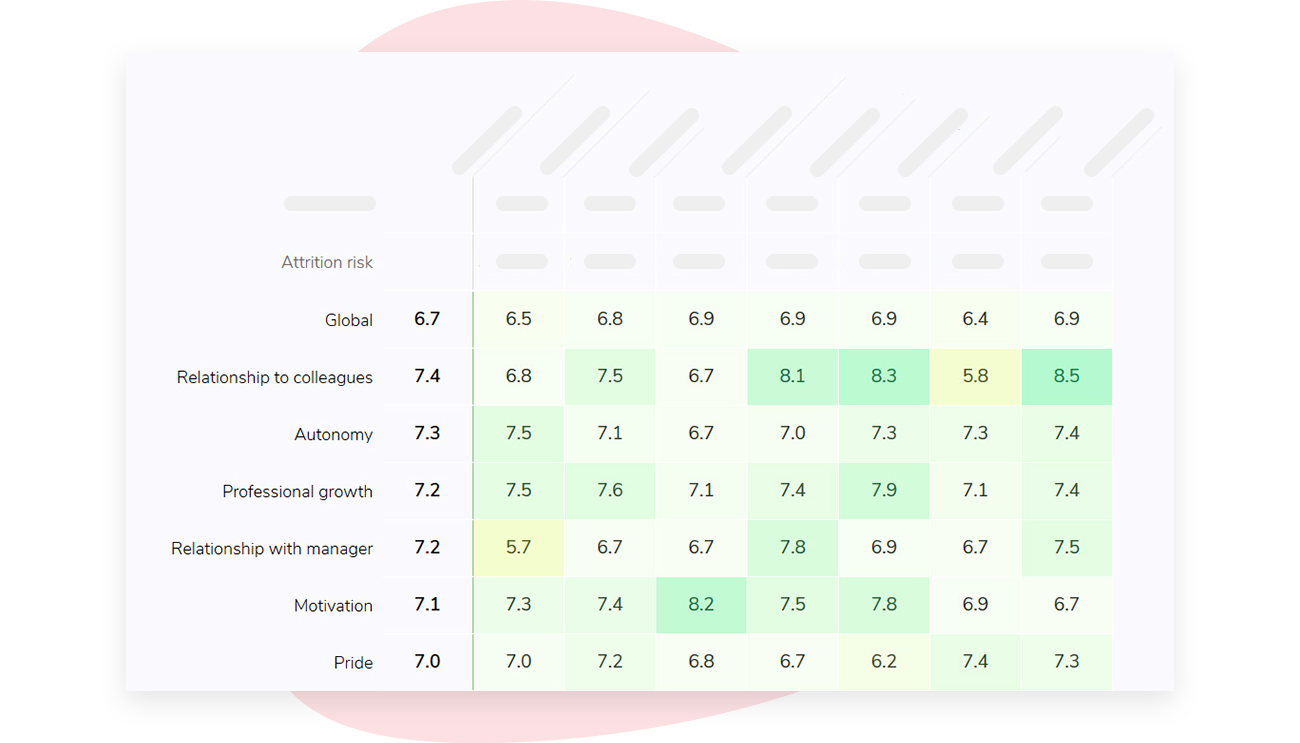
With the help of these reports, you’re able to track employee sentiment in real-time, and understand your top improvement opportunities.
You can also segment your data based on manager, department, tenure and more, or benchmark yourself against companies in the same industry as yours using our proprietary dataset.
We also created a library of easy-to-implement actions from the most successful organizations to help you and your team managers learn and improve.
It’s a great way to monitor your employees' sentiment during the transition, and make sure your workforce stays engaged.
If you're interested in learning how Sparkbay can help you ensure a seamless transition, you can click here for a demo.
Here are the top questions every company going through a merger should ask their workforce.
Pre-merger survey questions
- Overall, I believe the acquisition will be good for our organization.
- I feel confident I can deliver in my role following the merger.
- I feel secure in my current position.
- I understand how the acquisition will impact my role.
- I’m excited for the new opportunities that will result from this merger.
- I believe in this organization’s ability to make this transition successful.
Post-merger questions
- My workload has been reasonable following the acquisition.
- I feel as included in decisions that affect my work as before the acquisition.
- My coworkers are going above and beyond to make this transition successful.
- My direct manager provides the support I need during the transition.
- Other departments at the company are collaborating well with us to make the transition successful.
- I feel welcomed in the new company.
- I have the resources I need to do my job well.
- I understand my role in the new company and how it relates to the company’s success.
Pre-merger survey questions
Word’s spreading that a merger is in the works. There’s no formal announcement, but there are leaks and employees are starting to whisper about what this could mean for them.
At this stage, clear communication is essential (if you're in a publicaly traded company you must wait the official announcement).
What happens if employees don’t know what’s going on
If employees don’t receive clear communication about the prospective M&A, they’ll fill in the blanks themselves.
The more complex your merger is, the more pre-merger leaks you can expect from the “inner circle” of decision makers. Your workforce will want to know:
- Whether your organization is the acquirer or the acquiree
- What type of acquisition this will be (e.g. conglomerate, vertical, etc.)
- How the company’s culture will change in a post-merger environment
- Whether their roles will become redundant
- Whether this will positively or negatively impact their career progression
Overall, I believe the acquisition will be good for our organization.
If people are uncertain, they’ll go looking for answers from their manager or a colleague or a friend who knows someone who works for the consulting firm overseeing the merger. You get the idea. The result is that your organization loses control of the message. And the perceived message will determine whether employees:
- Believe it’s worth it to go above and beyond in their role, otherwise known as showing “discretionary effort”
- Start thinking about the future of their career outside of the company
You can start by sharing the reasons for your merger, for example:
- Increase market shares (horizontal merger)
- Acquire a key supplier (vertical merger)
- Expand into a new industry (conglomerate merger)
- Hire talent in bulk (acquihire).
I feel confident I can deliver in my role following the merger.
After a merger, workloads and job stress tend to increase as people take on more responsibility, new colleagues enter the mix, and new managers take over.
This last change can be especially demoralizing. Employees may feel like the work they’ve done to-date counts for nothing. They have to start from scratch proving themselves to a new boss.
If your survey results show that people feel worried about their ability to perform in their role, distribute a follow-up pulse survey to understand why they feel like they’ll struggle.
Are they concerned about:
- their workload?
- changed company culture or politics?
- new systems or technologies?
Address these concerns in your merger communications strategy by sharing how you’ll be supporting employees, what the new org structure will look like, and what the new focus of your organization will be.
I feel secure in my current position.
An estimated 30% of employees are considered redundant after a merger within the same industry.
You can’t make promises about who will stay in a post-merger environment. You may not have that information to give.
What you can do is understand how many people believe they’ll be made redundant per role and department.
You might learn that there’s a high level of uncertainty and dissatisfaction within a team or department that’s vital to your post-merger success, which calls for a tailored communications strategy.
Suppose a leading tech company is undergoing a merger.
While the engineers and developers are happy, the salesforce is hearing rumblings of changes to their processes or compensation structure.
A strong sales team is vital to a company’s ability to generate success, and great salespeople are constantly being recruited by competitors.
If your sales team senses weakness or uncertainty, they may consider pursuing a new opportunity.
These survey questions are also a way to gauge your workforce’s willingness to take on new roles in a post-merger workforce. Even if their roles become redundant, there may be net-new roles the company needs to fill. This can give your HR team a sense of whether you’ll need to focus your energy on re-training or recruitment after the merger.
I understand how the acquisition will impact my role.
It’s important that employees know how an acquisition will impact their roles.
If roles will remain the same, you’ve got an easy message to communicate.
If roles will have new responsibilities tacked on, you’ll want to prepare a plan for additional training or upskilling.
Transparency is key. If your official line is that roles will stay the same, but employees know that 40% of the current workforce’s roles overlap with the acquirer’s roles, they’ll view your communication strategy with suspicion and stop trusting future messages.
I’m excited for the new opportunities that will result from this merger.
A merger is difficult. Even more so if your employees are going backwards.
It's critical that your employees are excited about the merger.
If they are not, you will need to step up communication about the opportunities for the company and the potential for career growth.
I believe in this organization’s ability to make this transition successful.
How much faith does your organization have in its management?
If it’s low, figure out why.
Is there mistrust around communication?
Has there been fumbles in the past around big change management projects?
These past activities inform how your employees process any reassurances about your merger.
Plus, companies are already starting at a disadvantage. One in three people say they don’t trust their employer.
That trust keeps decreasing the further away from senior management you get with 64% of executives reporting trust in their organization and only 48% of non-managerial staff saying they do.
If you score low on this question, pose follow-up questions to get to the root of the problem, so you can address them.
Post-merger questions to ask your employees
Once the merger happens, the challenges really begin. How you engage with employees will determine how well the process unfolds.
My workload has been reasonable following the acquisition.
Have several roles been consolidated? Ineffective consolidation may leave employees handling a significantly larger workload than they did before the merger.
Gratitude about still having a job may make employees hesitant to complain.
Instead of asking for help or a lighter workload, they may choose to find another job instead.
By asking people about their post-acquisition workload, you can identify the specific tasks that are causing stress.
The solution could be as simple as introducing a tool that automates time-consuming, repetitive, manual tasks. But you can’t present these solutions if you don’t first know the problems.
I feel as included in decisions that affect my work as before the acquisition.
This is an important question, especially for people in critical roles.
An employee may value the consultative approach their company takes and the fact that their voice is heard.
A dramatic change in this area can impact employee morale and motivation and tempt employees to look for opportunities more in line with their former company’s culture.
An employee engagement survey can help identify:
- the teams where this presents a problem
- how widespread the problem is
- opportunities for improvement
My coworkers are going above and beyond to make this transition successful.
How do employees from the two original companies mesh after the merger?
Are they cooperative and curious, or are they struggling to reconcile different ways of doing work?
Was your merger an international one involving countries with different professional norms and customs?
Ask your employees how they’re getting along with their co-workers.
Tension between co-workers can reduce productivity, turn a fractured culture into a toxic culture, and reduce employee retention.
My direct manager provides the support I need during the transition.
During times of change, employees look for leadership.
They’ll expect the most immediate guidance and communication from their direct manager.
If employees say the support they’re receiving is insufficient, ask follow up questions to determine where they need help. It could be that managers don’t have the training or the information to properly support their employees.
Other departments at the company are collaborating well with us to make the transition successful.
How well are the merged departments meshing?
Manual processes, confusing approval processes, and new systems can throw a wrench into employees’ workflow.
While adaptability is expected, there may be opportunities for more training or streamlined processes to improve the relationship between different teams.
I feel welcomed in the new company.
How comfortable your employees feel after a merger may depend on whether they’re from the acquired company or the acquiring company.
If they’re from the acquiring company, there may not be a significant difference since their leadership will likely stay the same and their original company’s culture will be the dominant force.
If employees are from the acquired company, their management may have changed and they may undergo corporate culture shock as they adjust to the acquiring company’s ways of doing business.
This question is a quick way to gauge whether there are tensions that will impact your post-merger performance.
I have the resources I need to do my job well.
After a merger, your employees’ responsibilities may go up as roles are consolidated. It’s important to know whether they have the resources they need to do their job.
An increase in the number of employees may call for a new software.
Increased demand may call for more resources, subscriptions, or licenses.
Ask the people doing their jobs what they need to do their jobs well.
I understand my role in the new company and how it relates to the company’s success.
Having a sense of purpose is important for employee engagement.
Do your employees know what the purpose of their role is in the new company?
If not, you may have an engagement and performance problem on your hands.
When employees don’t know why they’re doing the work that they’re doing or they don’t have insight into higher-level decisions, they tend to view any added effort above and beyond their job description as futile.
How can you prepare your employees for a merger?
Employee surveys are an effective way to temperature check your workforce’s feelings throughout an M&A.
That said, there are general steps you should take, regardless of the type of merger or your existing company culture, to prepare your workforce for a merger:
Create an internal communications strategy
Control the message around your M&A, so that employees don’t get all of their information from the media or the workplace rumour mill.
Even if you do manage to keep your M&A under wraps until the ink dries on the paperwork, suddenly announcing to employees that their company is now owned by another company can be a jarring, anxiety-inducing experience.
Employee surveys can help greatly with this experience. They can help you gauge how employees are responding to news of an M&A and help you direct your attention to where it’s needed most.
Share your transition and integration strategy
Once news of an M&A spreads, your employees will have questions about:
- who their new managers will be
- how their track record and previous accomplishments will transfer over to this new company’s people management processes
- how specific workflows will change
You may not immediately have the answers to all of these questions, but it’s important to communicate that you’re aware of the concerns and will share updates as they come.
Share organizational charts of what the company will look like and how it will be structured in a post-merger environment as well.
Align the two organizations’ goals, objectives, and company cultures
Employees from both organizations have spent years learning the ropes, studying the company’s values, and acclimating to the company culture.
An M&A throws a wrench into all of that, causing confusion and distress as people try to fit what they know into a brand new model of operating.
Before your merger, take the time to map out both companies’:
- Goals and objectives
- Mission and vision
- Company culture
Then, look for areas of alignment and divergence. If you can start looking for connection points beforehand and coming up with strategies to address friction points, you can limit the amount of post-merger tension and conflict.
Remind employees why their roles are important
With heads full of ideas about layoffs and promotions and new managers, it’s easy for employees to lose focus on their day-to-day work. They may question whether their work is valuable to the company or if it’s worth shifting their energy elsewhere, like networking or updating their resume. Take steps to remind employees of the value of their role by:
- Broadcasting the accomplishments of different teams
- Rewarding employees from different departments who do work that aligns with the company’s mission and vision
The benefits of a robust employee survey platform
A robust employee survey platform such as Sparkbay can help leaders understand obstacles and opportunities and focus their efforts where it matters. It can also track engagement and satisfaction over time to identify which actions are working and which aren't.
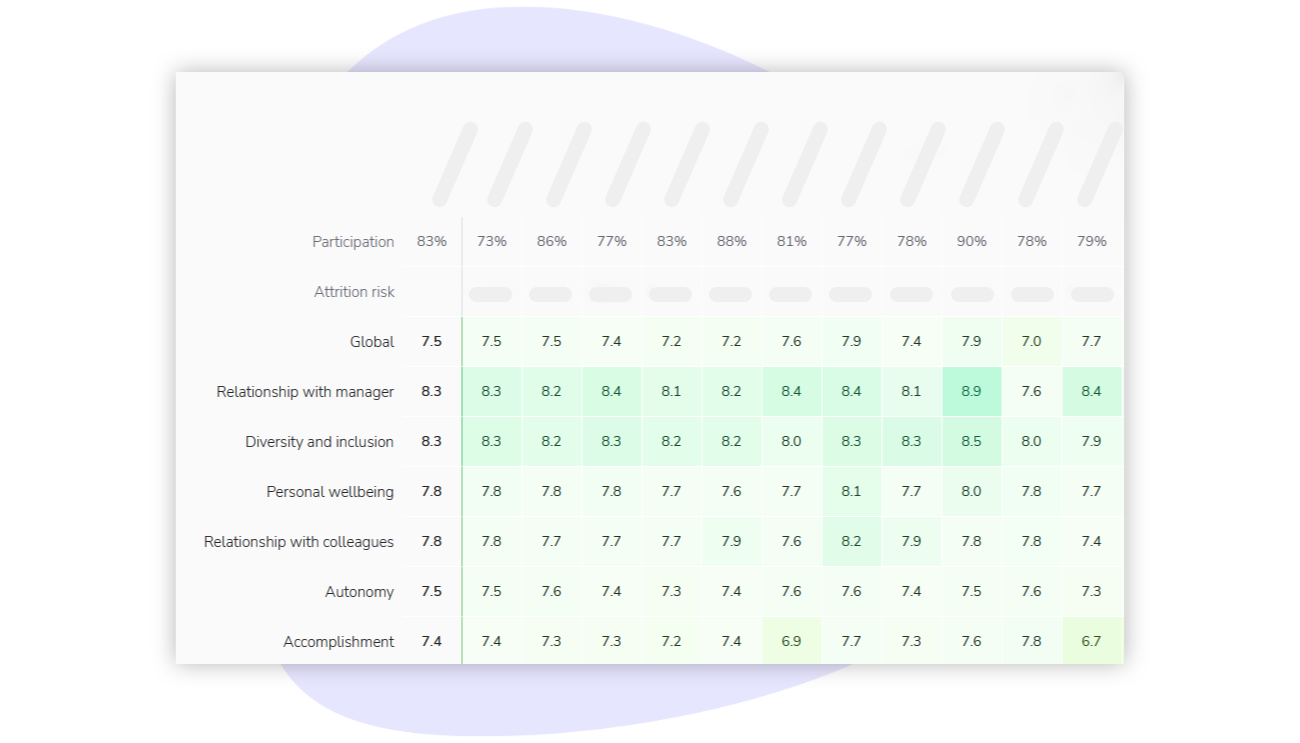
Explore employee data any way you want
It is important to be able to segment data based on demographics such as tenure and role. Sparkbay allows leaders to interrogate their data in any way they want to uncover deeper insights about their people.
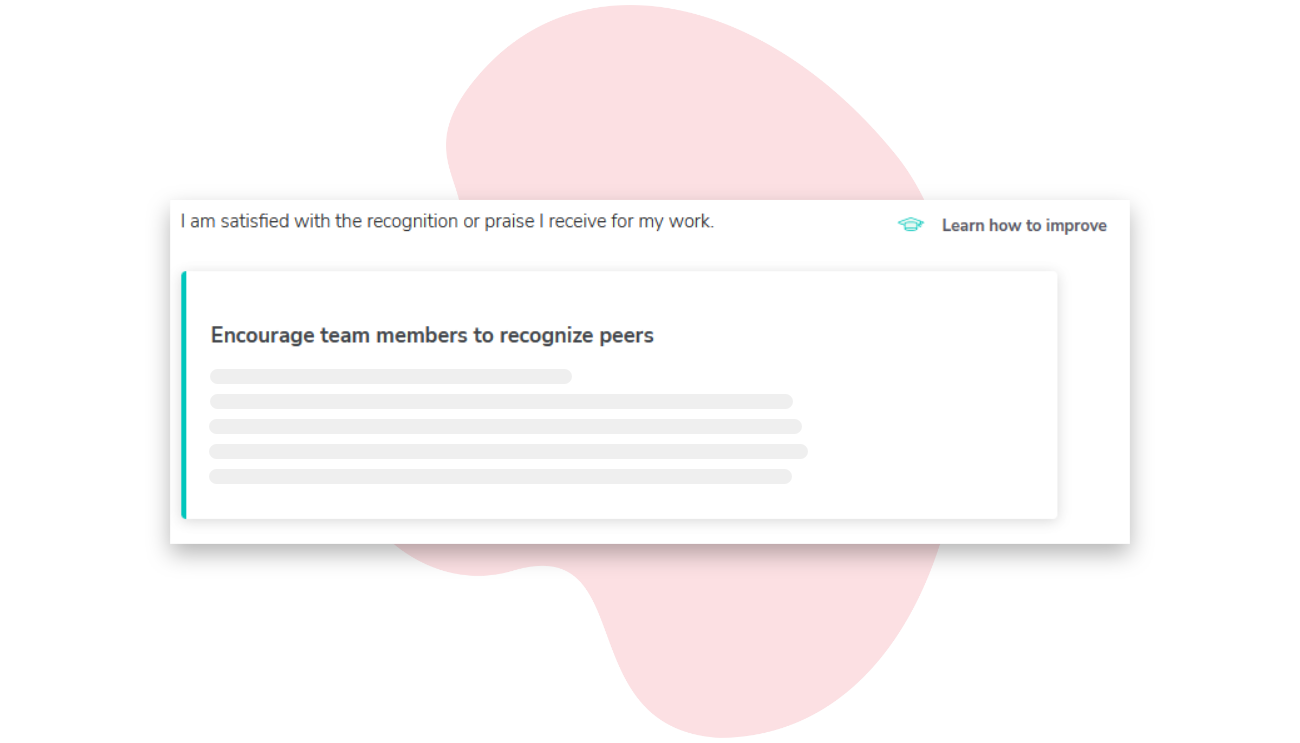
Empowers action
Surveying employees serves no purpose if leaders do not take advantage of the opportunities they discover. With Sparkbay's automated coaching, managers can act on easy-to-implement strategies. These tools drive action to ensure you meet your employee-centric objectives.
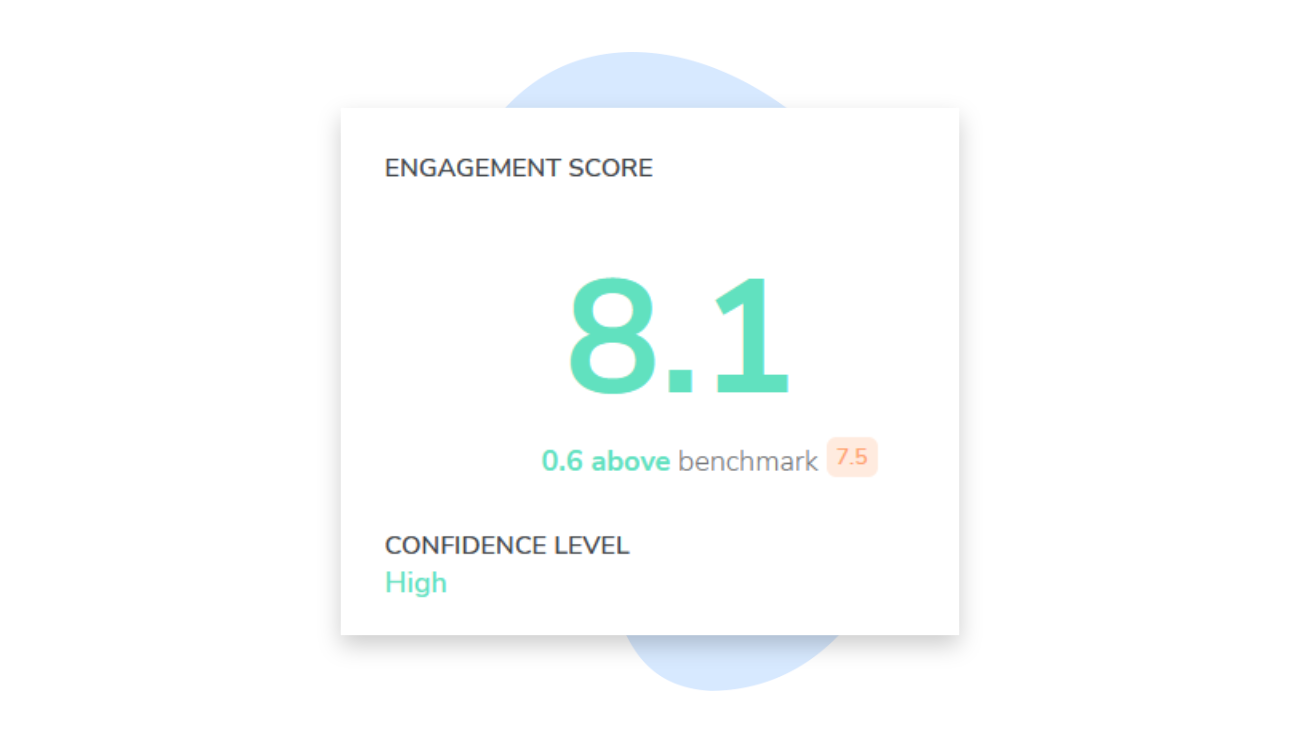
Provides robust benchmarks
Leaders need to compare their survey results with industry benchmarks to understand how they are doing. Using the right survey platform, you can compare your survey data with others in your industry, similar-sized companies, and top employers.
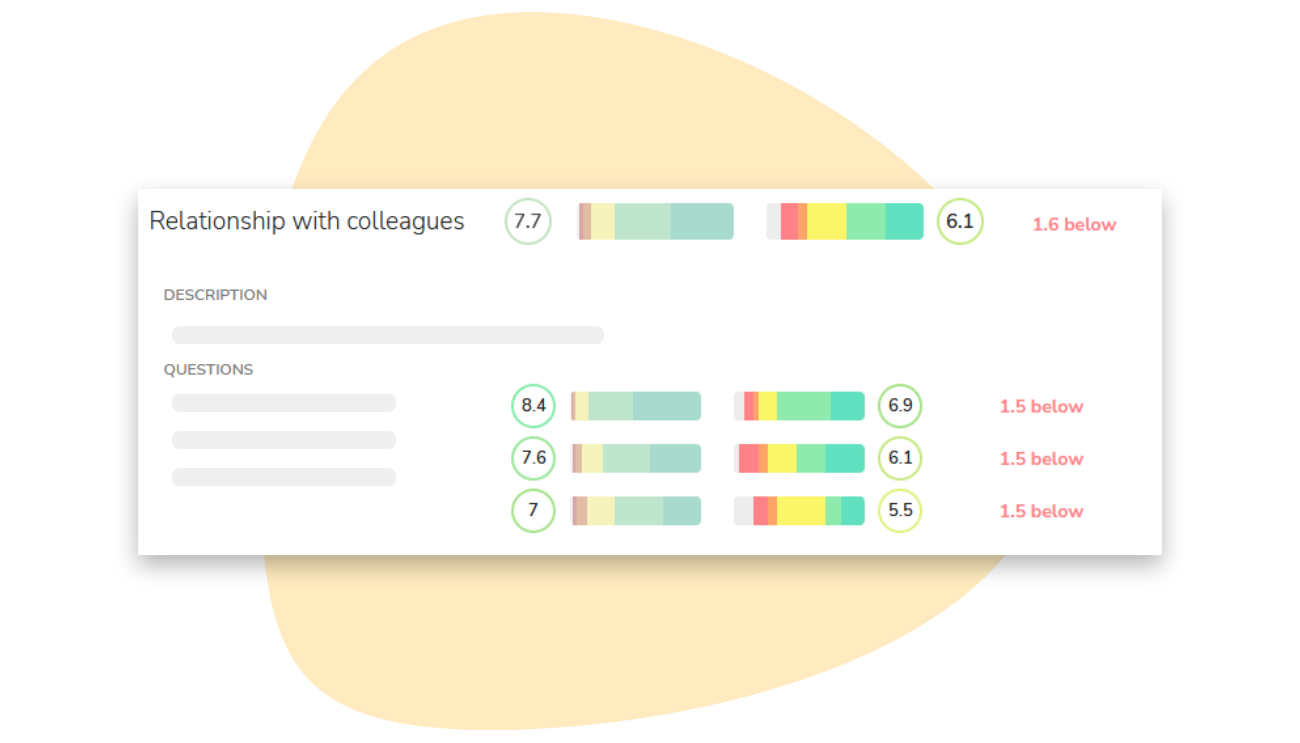
Equips managers with dashboards to visualize their results
Manager dashboards help managers visualize their survey results all in one place. With these dashboards, managers can easily track employee experience trends, and identify strengths and opportunities.
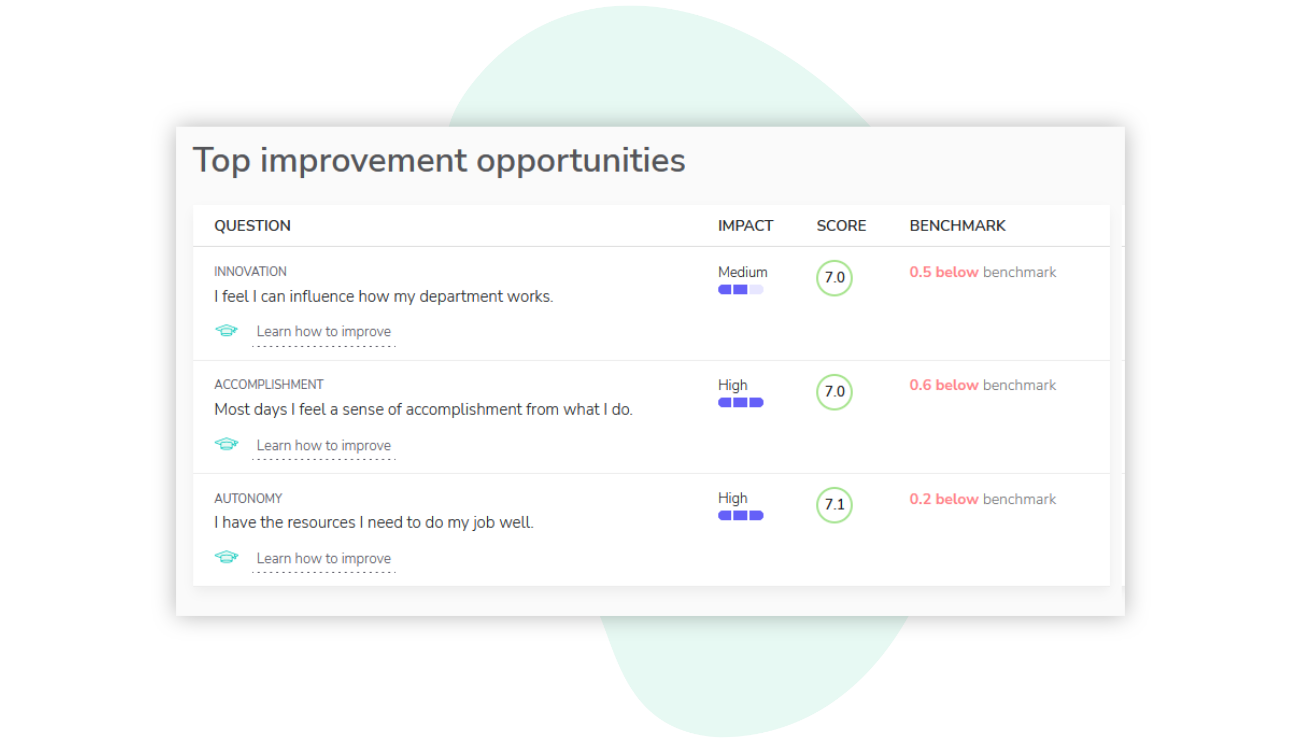
Provides a seamless user experience
You don't want your managers to waste valuable time on a clunky, hard-to-use platform. We designed Sparkbay with simplicity in mind. Your managers will master our intuitive dashboards in no time.

Gain access to real-time results
Taking action is the most significant part of your survey strategy. That’s why Sparkbay's real-time results let you expedite your process and propel insights into action.
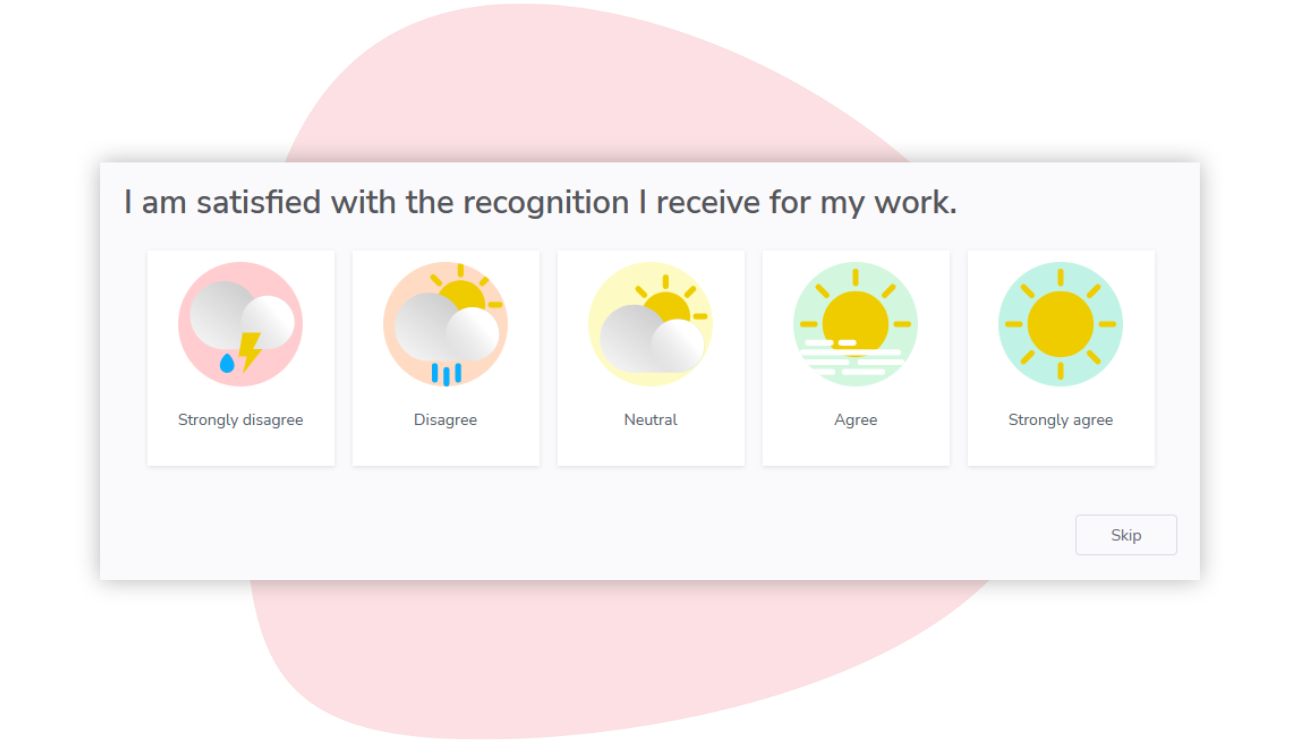
Use an employee survey software to stay in the loop about how your employees feel
Sparkbay’s employee survey software makes it easy for employers to understand how their employees are handling an upcoming or completed M&A process.
Our platform allows companies to collect employee feedback through user-friendly surveys compare responses over time to gauge the impact of your integration initiatives.
If you're interested in learning how Sparkbay can help you ensure a seamless M&A transition, you can click here for a demo.

